Creating a Sustainability Matrix – One Community Weekly Progress Update #578
One Community is committed to creating a sustainability matrix through our all-volunteer team. Our approach uses sustainable practices in food, energy, housing, education, economics, and social architecture, all aimed at fostering fulfilled living and global stewardship practicess. Everything we do is geared towards “The Highest Good of All,” with our model designed to be self-replicating. By open sourcing and free sharing the complete process, we’re paving the way for evolving sustainability and regenerating our planet. Join our all-volunteer team in creating a world that works for everyone.
- Here’s our project overview
- Here’s our world-change methodology
- Here’s how this becomes self-replicating
- Here’s how we are open source and free-sharing all the do-it-yourself designs
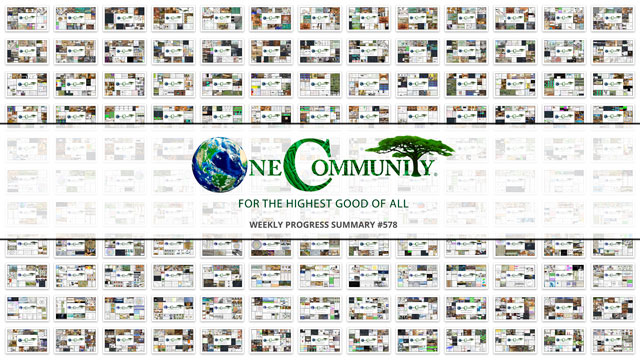
OUR MAIN OPEN SOURCE HUBS
Click on each icon to be taken to the corresponding Highest Good hub page.
One Community’s physical location will forward this movement for creating a sustainability matrix as the first of many self-replicating teacher/demonstration communities, villages, and cities to be built around the world. This is the April 15th, 2024 edition (#578) of our weekly progress update detailing our team’s development and accomplishments:
Creating a Sustainability Matrix
One Community Progress Update #578
DONATE | COLLABORATE | HELP WITH LARGE-SCALE FUNDING
CLICK HERE IF YOU’D LIKE TO RECEIVE AN EMAIL EACH WEEK WHEN WE RELEASE A NEW UPDATE
YOU CAN ALSO JOIN US THROUGH SOCIAL MEDIA
ONE COMMUNITY WEEKLY UPDATE DETAILS
HIGHEST GOOD HOUSING PROGRESS
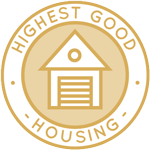 One Community is creating a sustainability matrix through Highest Good housing that is artistic and beautiful, more affordable, more space efficient, lasts longer, DIY buildable, and constructed with healthy and sustainable materials:
One Community is creating a sustainability matrix through Highest Good housing that is artistic and beautiful, more affordable, more space efficient, lasts longer, DIY buildable, and constructed with healthy and sustainable materials:
-
-
- Learn about: Our Upcoming Crowdfunding Campaign
- Learn about creating a sustainability matrix with 7 different village models: 7 Sustainable Village Models
- Visit the open source portals for the first two: Earthbag Village OS Hub | Straw Bale Village OS Hub
-
This week, Hayley Rosario (Sustainability Research Assistant) worked on modeling a hot tub for the Earthbag Village 4-dome cluster, and continued helping finalize the Highest Good Food rollout plan. She modeled a hot tub based on a given image for a larger video model of a house using SOLIDWORKS and exported the model into SOLIDWORKS Visualize, allowing someone to incorporate textures into a GBL file. In collaboration with Highest Good Food, numerous articles to aid in the production of the Integration Program were reviewed. She also watched videos on CSA’s and school food forests, while finalizing topics for the integration section pending review and approval. Highest Good Housing and Highest Good food are an important part in creating a sustainability matrix with One Community’s open source plans. See her work in the collage below.
Mithil Upadhyay (Mechanical Engineer) continued working on problem solving the designs for the Vermiculture Toilet. He worked towards completing the design of the closing mechanism as presented in the previous week. Mithil focused on designing various components, such as shut-off blades and frames, to support this mechanism. Additionally, he initiated the assembly of these components, which marked significant progress in the project as the parts began coming together for the final design. Sustainable human waste processing options, like the vermiculture toilets, are a foundation of One Community’s open source model for creating a sustainability matrix. Below are some demonstration images of his work.
Loza Ayehutsega (Civil Engineer/Assistant Civil Engineer) completed another week working on the Earth Dam risk assessment and dam break hazard assessment. She worked on emergency plan actions for the dam safety. An Emergency Action Plan (EAP) is a formal but simple plan that identifies potential emergency conditions that could occur at a dam and prescribes procedures to follow to minimize loss of life and the potential for property damage. Ideally, the design, construction, operation, maintenance and inspection of dams are all intended to minimize the risk of dam failures. Ensuring dam safety measures and preparedness are a foundation of One Community’s open source earthworks as part of creating a sustainability matrix. See the pictures below for examples related to this work.
Rizwan Syed (Mechanical Engineer) began helping finish the Vermiculture Toilet designs. He reviewed the ‘Rizwan Quadri Syed and One Community Collaboration’ onboarding Google Doc, providing relevant comments on each section as requested by Jae. He also signed up for the HGN app to log his volunteering work hours, and familiarized himself with the Vermiculture Toilet design project by reviewing essential documents, including the Vermiculture Eco-Toilet design page on One Community’s website, the Vermiculture Collaboration Google Doc (56 pages), and associated sub-documents on loading calculations for the vermiculture chamber. He examined the action items for the vermiculture project, including the design intent/criteria section, to understand the project’s scope and the specific tasks he would be undertaking to advance the vermiculture toilet design. The vermiculture toilets and other sustainable human waste processing technologies are one aspect of creating a sustainability matrix with One Community’s open source plans. Here are a few photos showing examples of his work.
Sajal Shah (Project Manager) began managing completion of the Highest Good Energy components. She completed the ad project “2.1.6 – Finish Complete-Village Electrical Tutorials” and is awaiting feedback from Jae for any necessary corrections. Sajal also began work on another advertising campaign targeting different required skills. The primary focus is delivering high-quality content to market to potential volunteers. The Highest Good Energy is an essential component of One Community’s open source model for creating a sustainability matrix. See below for some of the pictures related to this work.
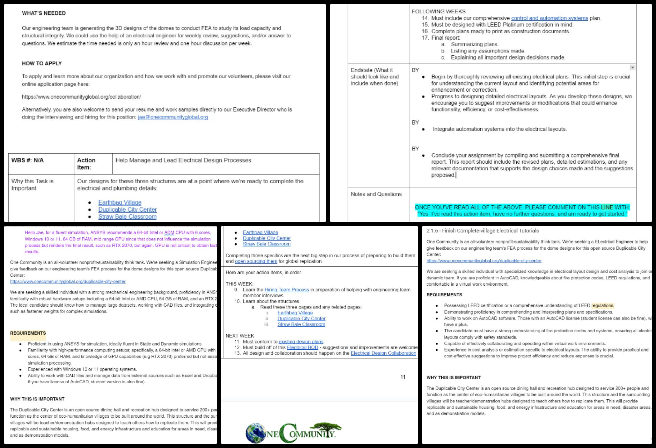
DUPLICABLE CITY CENTER PROGRESS
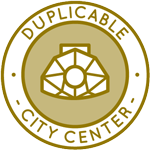 One Community is creating a sustainability matrix through a Duplicable and Sustainable City Center that is LEED Platinum certified/Sustainable, can feed 200 people at a time, provide laundry for over 300 people, is beautiful, spacious, and saves resources, money, and space:
One Community is creating a sustainability matrix through a Duplicable and Sustainable City Center that is LEED Platinum certified/Sustainable, can feed 200 people at a time, provide laundry for over 300 people, is beautiful, spacious, and saves resources, money, and space:
-
-
- Learn about this building and its function as part of creating a sustainability matrix: Duplicable City Center Open Source Hub
-
This week, Nika Gavran (Industrial Designer) continued her work on the Duplicable City Center dormer window installation plans. She finalized research on the dormer windows and established a schedule to draft instructions for building a dormer window on the first floor, spanning a three-week timeframe. Her primary focus was on developing a materials and component list, while also creating four draft renders at varying fidelities for consideration in the final draft. The Duplicable City Center is a foundational part of how One Community is open-source creating a sustainability matrix model. See below for some of the pictures related to this work.
HIGHEST GOOD FOOD PROGRESS
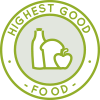 One Community is creating a sustainability matrix through Highest Good food that is more diverse, more nutritious, locally grown and sustainable, and part of our open source botanical garden model to support and share bio-diversity:
One Community is creating a sustainability matrix through Highest Good food that is more diverse, more nutritious, locally grown and sustainable, and part of our open source botanical garden model to support and share bio-diversity:
-
-
- Learn about the structures for creating a sustainability matrix related to food: Hoop House Hub | Aquapini & Walipini Open Source Hub
- See what we’ll be growing when creating a sustainability matrix for food at One Community: Gardens & Hoop Houses | Large-scale Structures | Food Forest | TA
-
This week, the core team continued updating and expanding the Highest Good Food tools, equipment, and materials details focusing on tool descriptions. The focus shifted to powered hand tools, with individual tools separated from the combination tools kit. Each tool, including miter saw, circular saw, multi-tool, impact driver, Sawzall, orbital sander, router, and others, received its own photo and description. Highest Good food is an important part of creating a sustainability matrix with One Community’s open source plans. See their work in the collage below.
Charles Gooley (Web Designer) continued to work on the various recipes as part of the Transition Food Self-sufficiency Plan. This week, he added a variety of new recipes including Chickpea Sandwich, Buffalo Chicken Pasta, Mashed Potato and Tofu with Vegan Gravy, Potato Pancakes with Eggs, Pasta with Sautéed Chicken, Frittata, Tomato Sauce Pasta and Chicken Parmesan Meatballs, Brown Rice and Soy Marinated Tofu Bowls with Spicy Peanut Sauce, Sweet Potato Muffins and Tofu Scramble, Brown Rice with Grilled Chicken and Super Green Salad, Fish Potato Soup with Cheesy Garlic Bread, Celery, Cucumber, and Grape Salad, Brown Rice Tabbouleh, Parsley Pesto Pasta with Blistered Tomatoes and Quinoa, Sweet Potato Quinoa Bowl, Brown Rice with Sausage, Blackberry and Parsnip Traybake, Roasted Potato Bowls and BBQ Chicken. Placeholder images were utilized, to be replaced by final images upon availability. Highest Good food is an important part of creating a sustainability matrix with One Community’s open source plans. See his work in the collage below.
HIGHEST GOOD EDUCATION PROGRESS
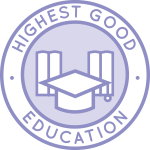 One Community is creating a sustainability matrix through Highest Good education that is for all ages, applicable in any environment, adaptable to individual needs, far exceeds traditional education standards, and more fun for both the teachers and the students. This component of One Community is about 95% complete with only the Open Source School Licensing and Ultimate Classroom construction and assembly details remaining to be finished. With over 8 years of work invested in the process, the sections below are all complete until we move onto the property and continue the development and open sourcing process with teachers and students – a development process that is built directly into the structure of the education program and everything else we’re creating too:
One Community is creating a sustainability matrix through Highest Good education that is for all ages, applicable in any environment, adaptable to individual needs, far exceeds traditional education standards, and more fun for both the teachers and the students. This component of One Community is about 95% complete with only the Open Source School Licensing and Ultimate Classroom construction and assembly details remaining to be finished. With over 8 years of work invested in the process, the sections below are all complete until we move onto the property and continue the development and open sourcing process with teachers and students – a development process that is built directly into the structure of the education program and everything else we’re creating too:
- Creating a sustainability matrix in education: Education Open Source Hub
- How the components work together: How to use the Education for Life Program
- Lesson Plans for Life – Lesson Plans How-to
- Foundations of Outstanding Leaders, Teachers, and Communicators
- Curriculum for Life
- Teaching Strategies for Life
- Learning Tools and Toys for Life
- Evaluation and Evolution
This week, Apoorv Pandey (Mechanical Engineer) began helping with the engineering details for the The Ultimate Classroom part of the Highest Good Education component. He completed his onboarding process and started to work on DIY-Replicable Straw Bale Structure Review & Report Prep project. He prioritized familiarizing himself with Civil/Structural Engineering software like AutoCAD and STAAD Pro to effectively fulfill project tasks. Apoorv focused on acquiring foundational knowledge for STAAD Pro, encompassing beam, 2D frame, and 3D frame analysis, alongside preliminary structural design and modeling. Additionally, he researched California building codes to ensure STAAD Pro calculations for the main roof truss could be accurately converted to PDF format as required by the State for approval. The One Community model of combining forward-thinking education with sustainably built classrooms like this are an excellent example of creating a sustainability matrix in education. See the collage below for his work.
HIGHEST GOOD SOCIETY PROGRESS
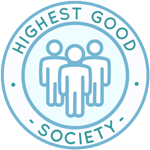 One Community is creating a sustainability matrix through a Highest Good society approach to living that is founded on fulfilled living, the study of meeting human needs, Community, and making a difference in the world:
One Community is creating a sustainability matrix through a Highest Good society approach to living that is founded on fulfilled living, the study of meeting human needs, Community, and making a difference in the world:
-
-
- Read the Highest Good society overview: Highest Good Society
- Learn about the model for fulfilled living and sharing: A Day in the Life
- Learn about the 4 economic models: RBE | For-profit | Non-profit | Entrepreneurship
- Learn about our open source community collaboration and management software: The Highest Good Network
-
This week, the core team completed over 73 hours managing One Community volunteer-work review not included above, emails, social media accounts, web development, new bug identification and bug-fix integration for the Highest Good Network software, and interviewing and getting set up new volunteer team members. They also shot and incorporated the video above that talks about creating a sustainability matrix and how creating a sustainability matrix is a foundation of the bigger picture of everything One Community is doing. The pictures below show some of this work.
Aaron Wang (Fundraising Assistant) continued helping to research possible funding sources for One Community. This week, Aaron continued in-depth research on connections with Leonardo DiCaprio, identifying emails, LinkedIn profiles, and backgrounds of individuals who may have personal or professional ties to DiCaprio. This effort is part of his broader strategy to facilitate connections with funders by building relationships with relevant individuals involved in these donations. His approach highlights a commitment to enhancing networking opportunities and establishing significant connections within the philanthropic community. Establishing win-win relationships like this are a big component to One Community’s vision for creating a sustainability matrix. The following images highlight his work for the week.
Arun Chandar Ganesan (Volunteer Data Analyst And SEO And Social Media Assistant) worked on completing an additional 10 pages assigned for search engine optimization. He also continued work on the social media performance guide, completing the initial draft. Additionally, Arun initiated A/B testing for the content posted to track performance while scheduling posts for the upcoming month accordingly. Search engine optimization and regularly working on content are important parts of One Community‘s model for creating a sustainability matrix. The following images show his work for the week.
Faisal Rasheed (Graphic Designer) focused on projects associated with permaculture zones. He created a new graphic for the permaculture zones, a table summarizing the zones, and the P.A. Yeomans scale of performance. Additionally, he revised existing graphics, added them to the approved list, and incorporated website links into previously designed graphics. Completing these images contributes to One Community‘s vision for creating a sustainability matrix. The images below show his progress for the week.
ADMINISTRATION TEAM
The Administration Team’s summary, covering their work administrating and managing most of One Community’s ongoing process for creating a sustainability matrix was managed by Vriddhi Misra (Admin and Marketing Assistant) and includes Durgeshwari Naikwade (Data Analyst), Jessica Fairbanks (Administrative Assistant), Olawunmi “Ola” Ijisesan (Administrative and Management Support), Ram Shrivatsav (Data Analyst and Admin assistant), Ratna Meena Shivakumar (Data Analyst and Admin), Ruiqi Liu (Administrative Assistant), Sinddhuzaa Poduri (Data Analyst and Admin assistant), Sneka Vetriappan (Data Analyst), T R Samarth Urs (Data Analyst), Vibhav Chimatapu (Data Analyst/Admin Assistant), Xiaolai Li (Administrative Assistant), and Zuqi Li (Administrative Assistant and Economic Analyst). This week, Durgeshwari focused on creating ‘HR Visualization’ and crafting Tableau Dashboards for the weekly volunteer summary, showcasing metrics such as the total number of volunteers, badges awarded, active and inactive volunteers, new volunteers, volunteers in teams versus not in teams, teams with four or more members, and work anniversaries for the week. Additionally, she developed visualizations displaying volunteering hours, role stats, and task and project stats, distinguishing between completed and incomplete tasks. Jessica completed her administrative tasks, reviewed weekly summaries, and created collages. Ola managed and reviewed tasks for the PR team, tracked progress reports, and managed correspondence. Ram organized and reviewed feedback, continued training in product testing, and assisted new joiners. Ratna reviewed progress updates, prepared collages, scheduled virtual interviews, and edited blogs to enhance SEO. Ruiqi completed review processes, created collages, and focused on SEO optimization for blogs and web pages. Sneka spent time on OC Administration tasks, focusing on timelog management and tutorial development. Samarth managed the PR review team, applied SEO techniques, and reviewed fellow admin team members’ work. Vibhav completed training on PR review processes, created group summaries and collages, and optimized web pages for SEO. Vriddhi finalized her training on PR review processes, created group summaries and collages, and enhanced webpage optimization for SEO. Xiaolai updated the webpage, completed financial spreadsheet introductions, reviewed cost analysis, and organized development documents. Zuqi also contributed to webpage updates, financial spreadsheet work, and document organization. One Community’s model for creating a sustainability matrix includes developing and maintaining a huge administration team like this. You can see the work for the team in the image below.
GRAPHIC DESIGN TEAM
The Graphic Design Team’s summary was managed by Zuqi Li (Administrative Assistant and Economic Analyst) and included Ashlesha Navale (Graphic Designer) and Zixi Zhang (Graphic Designer), covering their work on graphic designs for creating a sustainability matrix. Ashlesha focused on the development of a series of thematic social media images, specifically producing four titled Cooperation-Self-replicating Communities, Cooperation-Self-Sufficient Communities, Cooperation-Selfless Paradigm, and Cooperation-Support Work. She engaged in the selection and curation of nature-based backgrounds and various thematic images that align with the social media content’s requirements. She further extended her graphic design expertise to create nine recipe images tailored for a new project aimed at enhancing site content related to food recipes. Zixi created eleven Facebook shareable images that integrate sustainable and ecological motifs. These images included appropriate imagery, text overlays, and corporate identifiers to align with marketing objectives. She also undertook the creation of personal branding materials for Camilla, a volunteer, which included a profile photo, a bio image, and an announcement page. See the Highest Good Society pages for more on how this contributes to creating a sustainability matrix. See the collage below to view some of their work.
HIGHEST GOOD NETWORK PROGRESS
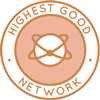 One Community is creating a sustainability matrix through open source Highest Good Network® software that is a web-based application for collaboration, time tracking, and objective data collection. The purpose of the Highest Good Network is to provide software for internal operations and external cooperation. It is being designed for global use in support of the different countries and communities replicating the One Community sustainable village models and related components.
One Community is creating a sustainability matrix through open source Highest Good Network® software that is a web-based application for collaboration, time tracking, and objective data collection. The purpose of the Highest Good Network is to provide software for internal operations and external cooperation. It is being designed for global use in support of the different countries and communities replicating the One Community sustainable village models and related components.
This week, the core team worked on the Highest Good Network PRs testing, confirming fixed PRs which include 11 PRs including those addressing alignment issues, input heights, permissions, and component functionality. However, several PRs remained unfixed, notably one concerning the non-closing behavior of the home Country option model and another regarding accessibility to the consumable add page. See the collage below for their work.
ALPHA SOFTWARE DEVELOPMENT TEAM
The Alpha Team’s summary, covering their work on the Highest Good Network software was managed by Sucheta Mukherjee (Software Developer) and includes Gayathridevi Chithambaram (Full Stack Developer), Jaiwin Thumber (Front-End Develolper), Lin Khant Htel (Frontend Software Developer), Pratima Singh (Software Developer), and Shamim Rahman (Software Engineer). The Highest Good Network software is how we’ll be managing and objectively measuring our process for creating a sustainability matrix through our social architecture, construction, production, and maintenance processes. Gayathridevi made ESLint changes to a common component, executed the link checker, manually fixed changes along with those fixed by lint –fix, and removed the component from .prettierignore and .eslintignore, committing the code to her branch. She focused on efficient error resolution and PR reviews for items #1-#7, deepening her understanding of the software’s functionality, and contributed time to learning new aspects of React and Git. Additionally, she contributed to documenting the team description, sharing insights about her experience and guiding the team. Lin reviewed and approved 9 pull requests on the HGN GitHub repository, familiarizing himself with all development team documents and recognizing the need to enhance understanding of unit testing and test-driven development. Lin also gained insights into the codebases, file structures, and components. Pratima completed key development tasks aimed at enhancing data visualization and reporting functionalities, developing two new components: TasksProjectsStats.jsx and BlueSquareStats.jsx, and adding styling features to improve readability and presentation. She finalized the OverviewReport page, contributing to improving user experience and data accessibility. Shamim completed the task of reviewing 9 different pull requests, testing their functionality, and providing feedback, including screenshots and videos for issues identified. Sucheta resolved conflicts on the backend PR861, reviewed and configured environment variables and the Gmail API in PR2050+795, and approved PR2147. She collaborated with a team member to address inquiries and is currently engaged in the task “Fix refresh efficiency when resolving tasks. See the Highest Good Society and Highest Good Network pages for more on how this relates to creating a sustainability matrix. View some of the team’s work in the collage below.
BADGES BUGS SOFTWARE DEVELOPMENT TEAM
The Badges Bugs Team’s summary overseeing advancements in the Highest Good Network software was managed by Shaofeng Li (Software Engineer) and includes Renan Luiz Santiago Martins César (Full-stack developer), Summit Kaushal (Backend Software Developer), Xiao Zhang (Software Engineer), and Xiaohan Meng (Software Engineer). The Highest Good Network software is how we’ll be managing and objectively measuring our process for creating a sustainability matrix through our social architecture, construction, production, and maintenance processes. This week, Summit worked on testing the changebadgecount and addbadge functions, strategizing solutions for identified issues. His further testing uncovered issues with badge earned dates and encountered an unrelated error message, prompting investigation. Additionally, Summit made efforts to match functions with totaltangiblehrs, but discrepancies remained, hinting at possible data anomalies. He directed his attention towards verifying backend logic and addressing potential frontend data handling issues, especially in fixdiscrepancy.js. Shaofeng did his part helping with creating a sustainability matrix as he worked on HGN Software Development, managing PR follow-ups, conducting thorough testing on Renan’s task, discussing badge component testing with Xiao in a one-on-one session, and participating in a team meeting for progress updates and planning. Additionally, Shaofeng ensured the correctness of new features and collaborated on strategizing for the following week’s activities. Xiaohan followed up on feedback for the Pull Request addressing the ‘Assign Badge on profile’ bug, resolving new challenges related to missing and duplicate badges. She utilized badge detail documentation and implemented corrections within MongoDB and the development branch’s backend, effectively rectifying issues with missing badges and duplicates. She also discussed with her manager to fix differences between badges on the main branch and the ones on the development branch. Xiao focused on developing a unit test to ensure correct badge assignment within the application, verifying that each badge triggers under the right conditions. This task involved defining parameters for each badge, coding test cases, and analyzing preliminary results to enhance accuracy and reliability. These modifications were crucial for maintaining the integrity of the badge system and ensuring user satisfaction. Renan concentrated on tasks related to disaster recovery implementation, creating a document outlining the process, recording a tutorial demonstrating testing procedures, resolving code issues, and providing assistance to colleagues with their pull requests, contributing to his task completion streak. See the Highest Good Society and Highest Good Network pages for more on how this relates to creating a sustainability matrix. View some of the team’s work in the collage below.
BLUE STEEL SOFTWARE DEVELOPMENT TEAM
The Blue Steel Team’s summary, displaying their work on the Highest Good Network software, was managed by Sarthak Jaiswal (Full-Stack Developer) and includes Alex Brandt (Full Stack Developer), Bhuvan Dama (Full stack Developer), Imran Issa (Software Developer), Nathan Hoffman (Software Engineer, Team Manager), Sanket Kaware (Full-Stack Developer), Shiqing Pan (Full-Stack Software Developer), Swathy Jayaseelan (Software Engineer), Tzu Ning “Leo” Chueh (Software Engineer), Xiao Wang (Software Engineer), and Yaohong Xiang (Software Engineer). The Highest Good Network software is how we’ll be managing and objectively measuring our process for creating a sustainability matrix through our social architecture, construction, production, and maintenance processes. This week, Sarthak submitted Pull Request #2155 aimed at rectifying formatting issues within the project report and handled management tasks for the week. Xiao did his part helping with creating a sustainability matrix as he contributed two pull requests, #2131 and #881, enhancing time entry handlers in frontend and backend systems, integrating user profile changes requests, and implementing MongoDB transaction mechanisms for database reliability. Swathy focused on improving unit test coverage of the Projects table component, addressing hover issues and completing unit testing for the User profile section. Nathan assisted with build problems, PR changes, Slack messages, and addressed various issues including preventing user deletion and package vulnerabilities. Alex progressed on writing an API for dashboard metrics and investigated API response issues for frontend PR 2083. Imran finalized tasks from the permission management fixes spreadsheet, raising PRs and addressing frontend permission fixes. Shiqing administered final reviews and conflict resolution for PR 1464, experimented with rendering techniques, and reviewed multiple pull requests while addressing comments on PR 1955. Bhuvan worked on the TableFilter.js functionality challenges and unit tests for UserProfileEdit components. Sanket focused on developing “6 months and yearly anniversaries” feature and addressed issues in previous PRs and weekly summaries reports. Tzu Ning addressed JavaScript errors by enhancing API response checks and resolving the “process is not defined” issue. Yaohong improved report profile by concealing unwanted blocks, resolved bugs in pull requests #2092 and #821, and implemented additional validation measures in the backend for system reliability. See the Highest Good Society and Highest Good Network pages for more on how this relates to creating a sustainability matrix. See below to view their work.
CODECRAFTERS SOFTWARE DEVELOPMENT TEAM
The Code Crafters Team’s summary, covering their work on the Highest Good Network software, was managed by Anirudh Ghildiyal (Software Engineer) and includes Meet Padhiar (Software Engineer), Nahiyan Ahmed (Full Stack Software Developer), Ramya Ramasamy (Software Engineer), Shantanu Kumar (Software Developer), Shengjie Mao (Software Engineer), Tapan Pathak (Software Engineer), Weiyao Li (Software Engineer) and Xiaoyu Chen (Software Engineer). The Highest Good Network software is how we’ll be managing and objectively measuring our process for creating a sustainability matrix throughout our social architecture, construction, production, and maintenance processes. Anirudh reviewed tasks assigned to teammates, ensuring accuracy and completeness before removing them from their dashboards, and made final adjustments as per the reviews while completing his assigned tasks. He also reviewed teammates’ summaries, pictures, and weekly videos. Meet focused on testing the frontend of phase one, ensuring merged pull requests aligned with intended outcomes, and completed the development of a new feature changing team member task button colors. Nahiyan implemented dark mode across the website, completing two PRs and working on a third, aiming to extend dark mode to various pages. Ramya concentrated on completing existing tasks, assisting team members with issues, reviewing for final pull requests, and addressing a bug affecting functionality intermittently while developing unit test cases. Shantanu did his part helping with creating a sustainability matrix as he enhanced his proficiency in writing backend test cases, studying materials to deepen understanding, and creating test cases for the profile dot nav component. Shengjie reviewed the pull request and initiated unit test development for another component, progressing with its implementation. Tapan resumed tasks after a break, addressing memory leaks, coordinating new team leadership, reviewing documents, and resolving issues discovered during testing, while also completing weekly summaries and engaging in review processes. Weiyao worked on the new user feature, making major changes based on system design documentation and coordinating with colleagues to refine backend functionalities. Xiaoyu enhanced the unit testing framework, refined backend functionalities, addressed critical errors, and collaborated with colleagues to improve code quality, documentation, and review processes, demonstrating proactive communication and contributing to project robustness and reliability. See the Highest Good Society and Highest Good Network pages for more on how this relates to creating a sustainability matrix. The collage below shows some of this work.
EXPRESSERS SOFTWARE DEVELOPMENT TEAM
The Expressers Team’s summary, covering their work on the Highest Good Network software, was managed by Ruiqi Liu (Administrative Assistant) and includes Christy Guo (Software Engineer), Mohammad Abbas (Software Engineer), Shereen Punnassery (Full Stack Software Engineer), and Tareq Mia (Software Engineer). The Highest Good Network software is how we’ll be managing and objectively measuring our process for creating a sustainability matrix throughout our social architecture, construction, production, and maintenance processes. Christy reviewed documentation and enhanced test cases for the team controller, focusing on unit and integration tests. Concurrently, she continued development on a visualization feature for the Projects Reports page, addressing both frontend and backend aspects. Mohammad did his part helping with creating a sustainability matrix as he tackled the issue of delayed hour count updates for individual tasks, investing nearly 9 and a half hours towards its resolution to ensure project functionality. Shereen finished unit testing for the AddUserProfile component, ensuring the proper rendering of buttons and input fields while preventing Axios errors from appearing in the console through API call mocking. Additionally, she verified state variable updates upon clicking the “Create” button. Tareq completed work on the map component table feature, debugging to implement searching functionality, enabling users to search by name or location. See the Highest Good Society and Highest Good Network pages for more on how this relates to creating a sustainability matrix. The collage below shows some of this work.
GIT-R-DONE SOFTWARE DEVELOPMENT TEAM
The Git-R-Done Team’s summary, covering their work on the Highest Good Network software, was managed by Chris Chen (Software Engineer Intern) and includes Nidhi Galgali (Software Developer), and Rhea Wu (Software Engineer). The Highest Good Network software is how we’ll manage and objectively measure our process for creating a sustainability matrix throughout our social architecture, construction, production, and maintenance processes. Chris implemented the use of ‘equipmentId’ instead of ‘toolId’ in the UpdateEquipment component, employing React hooks such as useState and useEffect, and Redux for state management, to fetch and display equipment details while enhancing UI components with Reactstrap and managing navigation with React Router. Nidhi did her part helping with creating a sustainability matrix as she expanded test coverage for the Blue Square Layout component by writing two additional test cases: one ensuring correct rendering when ‘canEdit’ is true, and another validating the functionality of the “Can’t Schedule Time Off” button in triggering an explanation modal. Rhea advanced recently assigned tasks by testing functions, making commits, and enhancing her understanding of Tailwind in React through tutorials and articles. See the Highest Good Society and Highest Good Network pages for more on how this relates to creating a sustainability matrix. The collage below shows some of this work.
MOONFALL’S SOFTWARE DEVELOPMENT TEAM
Moonfall Team’s summary, covering their work on the Highest Good Network software, was managed by Lu Wang (Software Engineer) and includes Abdelmounaim “Abdel” Lallouache (Software Developer), Cheng-Yun Chuang (Software Engineer), Haoji Bian (Software Engineer), Jiadong Zhang (Software Engineer), Malav Patel (Software developer) and Nnamdi Ikenna-Obi (Software Engineer). The Highest Good Network software is how we’ll be managing and objectively measuring our process for creating a sustainability matrix throughout our social architecture, construction, production, and maintenance processes. Abdelmounaim enhanced notification functionality, implementing notification emails for role additions and password changes, and resolving issues with time off request notifications, culminating in a documented pull request (PR 897). Cheng-Yun worked on implementing a function to fully delete a member from tasks and projects if removed from the user profile. Haoji did his part helping with creating a sustainability matrix as he improved user experience and backend stability, focusing on conflict resolution, UI improvements, and bug fixes for accurate user profile picture assignments. Jiadong replaced the badge on the dashboard and resolved related bugs, ensuring seamless functionality. Lu concentrated on debugging and expanding test functions for critical components, including the AddTaskModal and ImportModal files, while also contributing to team management tasks such as writing the weekly report and gathering screenshots from teammates showcasing their work. Malav addressed bug fixes in DELETE_TIME_ENTRY_OTHERS feature and HGN software development, making additional changes to restrict permissions. Nnamdi focused on development tasks without encountering major issues, utilizing a GitHub code space on a backup computer for work. See the Highest Good Society and Highest Good Network pages for more on how this relates to creating a sustainability matrix. Look below for a collage of their work.
REACTONAUTS’ SOFTWARE DEVELOPMENT TEAM
Reactonauts’ Team’s summary, covering their work on the Highest Good Network software, was managed by Masasa Thapelo (Software Engineer) and includes Abi Liu (Software Engineer), Changhao Li (Software Engineer), Hoang Pham (Software Developer), Peterson Rodrigues (Full-Stack MERN Stack Developer), Shengwei Peng (Software Engineer), Shiwani Rajagopalan (Software Engineer) and Yi Feng (Full-Stack Software Engineer). The Highest Good Network software is how we’ll be managing and objectively measuring our process for creating a sustainability matrix throughout our social architecture, construction, production, and maintenance processes. Abi reviewed Diego’s pull request concerning the reintroduction of ESLint, Prettier, and Jest changes. Additionally, he completed testing of the badge controller methods and routes. Changhao worked on unit test development for TimeEntryForm.jsx and TimeEntry.jsx, created the TeamPic folder for weekly submissions, and participated in weekly progress reporting. Hoang did his part helping with creating a sustainability matrix as he opened a pull request to fix a bug in the add and edit task modal and attempted to add copy functionality for ID texts in the Reports section. Masasa finalized the issue with the merge conflicts in his PR. Peterson implemented an autocomplete feature for the team code assignment input, located in the profile section and under the “Teams” tab. Shengwei focused on eliminating Sentry errors by updating dependencies, modifying the logger, and enforcing data validation to prevent null values. Shiwani tackled two main tasks: the TimeEntriesViz unit test and the RolePermissions unit test. For the TimeEntriesViz task, she created eight test cases, ensuring various aspects of the component’s functionality were evaluated, such as rendering, button visibility, and total hours display accuracy. For the RolePermissions unit test, Shiwani modified the test case for verifying the delete modal content, enhancing its accuracy and reliability. Yi concentrated on addressing lint errors, bugs, and transitioning tasks in the final two weeks. See the Highest Good Society and Highest Good Network pages for more on how this relates to creating a sustainability matrix. Look below for pictures of this work.
SKYE’S SOFTWARE DEVELOPMENT TEAM
Skye’s summary, covering their work on the Highest Good Network software, was managed by Luis Arevalo (Front End Developer) and includes Jiarong Li (Software Engineer), John Mumbi (Software Engineer) and Yao Wang (Software Engineer). The Highest Good Network software is how we’ll be managing and objectively measuring our process for creating a sustainability matrix throughout our social architecture, construction, production, and maintenance processes. Jiarong focused on making columns editable by the Owner on the User Management Page. John focused on testing and implementing changes outlined in PR 1910. Additionally, permissions necessary for editing the i popup component, specifically the Owner role, were reviewed and integrated as per requirements. Luis did his part helping with creating a sustainability matrix as he reviewed Diego’s tutorials and assisted Clemar with his branch. He then reviewed his own PR and ensured it worked before requesting reviews. Lastly, he completed unit tests on warningsController. Yao worked on implementing the feature for sending emails to specific users upon suspending them and setting the final day. Yao created new front-end and back-end branches and integrated the modified back-end code. Two constants were added to handle the data transmission to the back-end for email generation and processing when a button is clicked. See the Highest Good Society and Highest Good Network pages for more on how this relates to creating a sustainability matrix. See the collage below for some of their work.
SOFTWARE PR REVIEW TEAM A-L
The PR Review Team’s summaries for team members’ names starting with A-L and covering their work on the Highest Good Network software was managed by Olawunmi “Ola” Ijisesan (Administrative and Management Support). The Highest Good Network software is a foundation of what we’ll be using to measure our results of creating a sustainability matrix. This week’s active members of this team were: Aaron Persaud (Software Developer), Aaryaneil Nimbalkar (Software Developer), Anand Seshadri (Software Engineer), Bhuvaneswari Gnanasekar (Software Engineer), Harsh Bodgal (Software Engineer), Hiral Soni (Full Stack Developer), Huijie Liu (Software Engineer), Jordy Corporan (Software Engineer), KaiKane Lacno (Software Developer and Team Manager), Kurtis Ivey (Software Engineer), and KyoSook Shin (Software Engineer). They reviewed all the Highest Good Network PRs (Pull Requests) shared in this week’s update. Learn more about how the Highest Good Network will measure and assist in creating a sustainability matrix in the Highest Good Network open source hub. The collage below shows a compilation of the work from this team.
SOFTWARE PR REVIEW TEAM M-Z
The PR Review Team’s summary covering their work on the Highest Good Network software was managed by Olawunmi Ijisesan (Administrative and Management Support) and Samarth Urs (Administrative Assistant and Data Analyst). The Highest Good Network software is a foundation of what we’ll be using to measure our results of creating a sustainability matrix. This week’s active members of this team were: Mengtian Chen (Software Engineer), Mingqian Chen (Software Engineer), Olga Yudkin (Software Engineer), Parth Rasu Jangid (Software Developer), Pooja Suram (Frontend Software Developer), Sushmitha Prathap (Software Developer), Tim Kent (Full Stack Software Engineer), Yiyun Tan (Software Engineer), Youyou Zhang (Software Developer) and Zijie “Cyril” Yu (Software Engineer). They reviewed all the Highest Good Network PRs (Pull Requests) shared in this week’s update. Learn more about how the Highest Good Network will measure and assist in creating a sustainability matrix in the Highest Good Network open source hub. The collage below shows a compilation of the work from this team.
AND WE PRODUCED THIS WEEKLY UPDATES BLOG – CLICK HERE TO SUBSCRIBE
FOLLOW ONE COMMUNITY’S PROGRESS (click icons for our pages)
INVESTOR PAGES
GET INVOLVED
DONATE ● WAYS ANYONE CAN HELP ● MEMBERSHIP
CLICK HERE FOR ALL PAST UPDATES
 One Community
One Community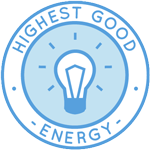
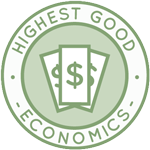
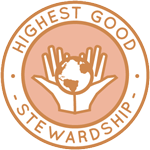

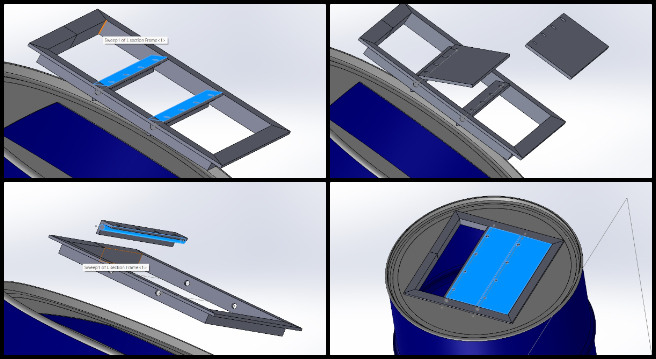
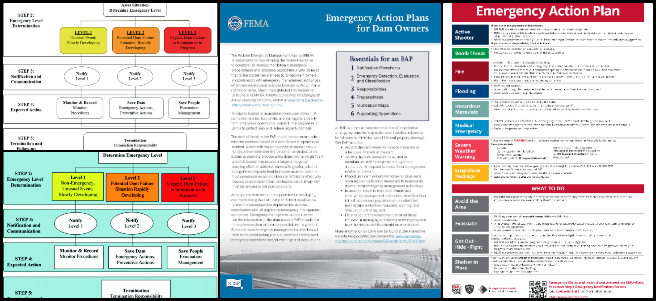
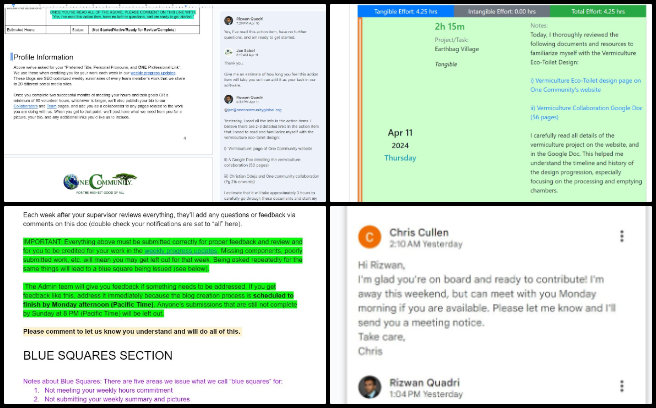
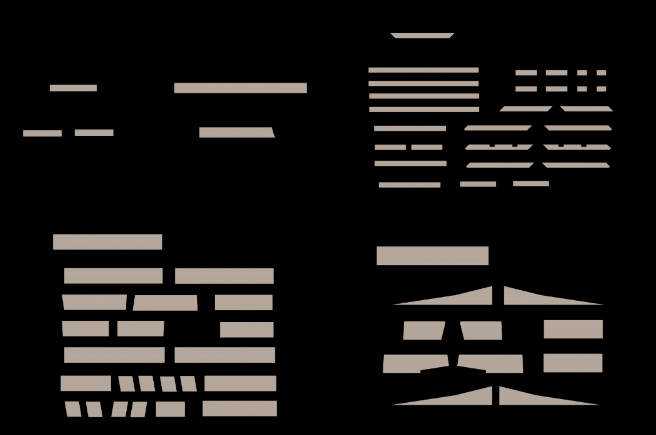
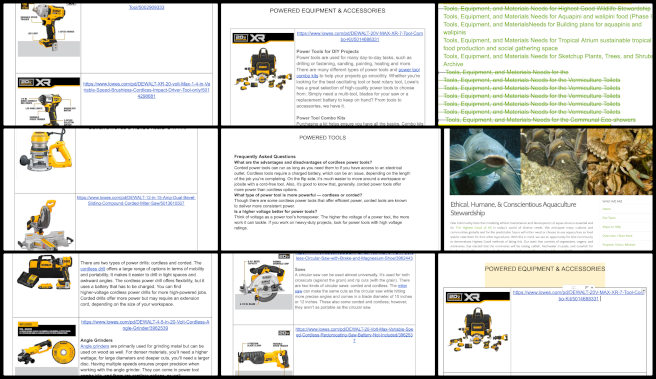
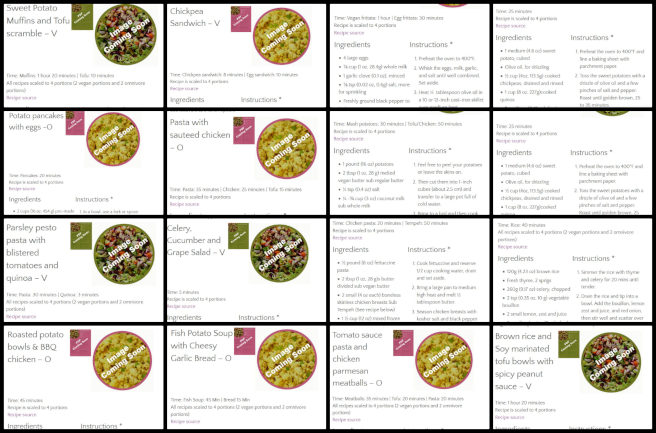
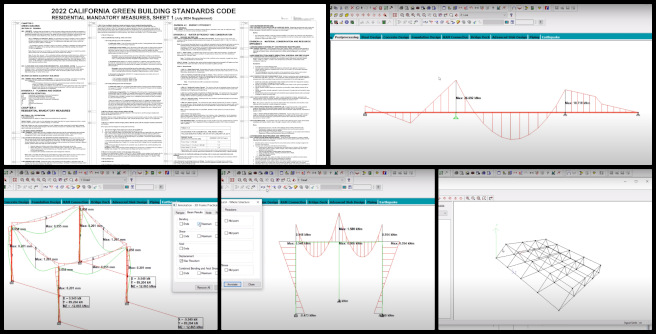
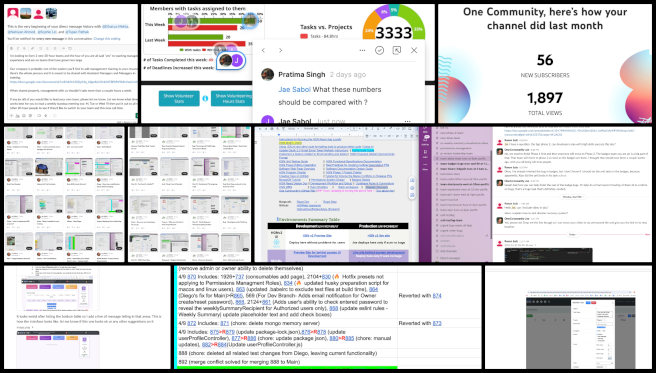
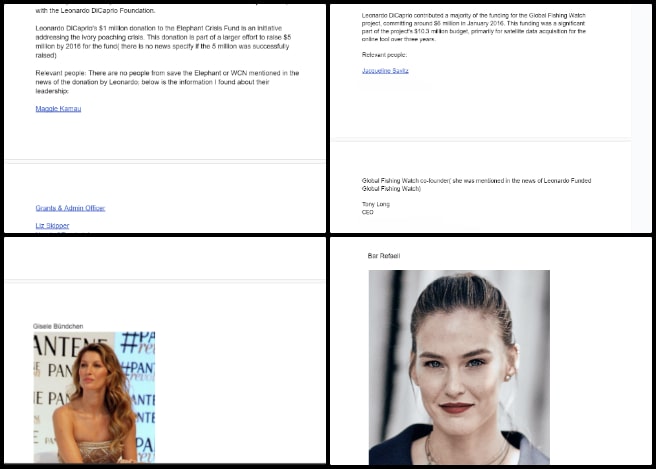
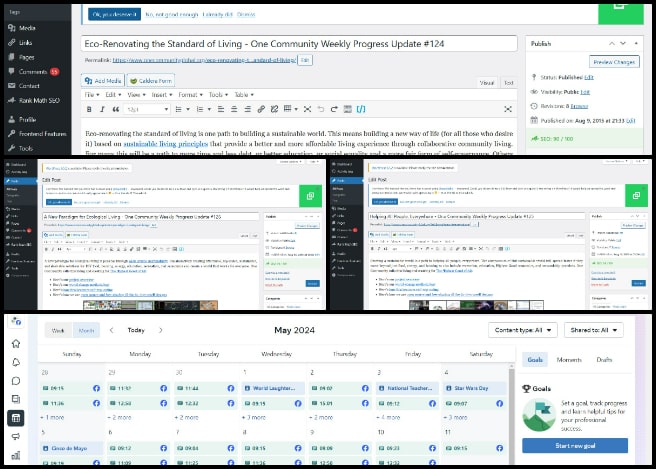
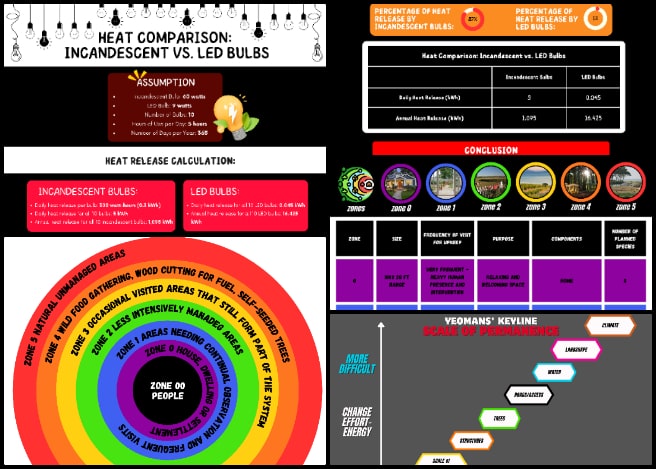
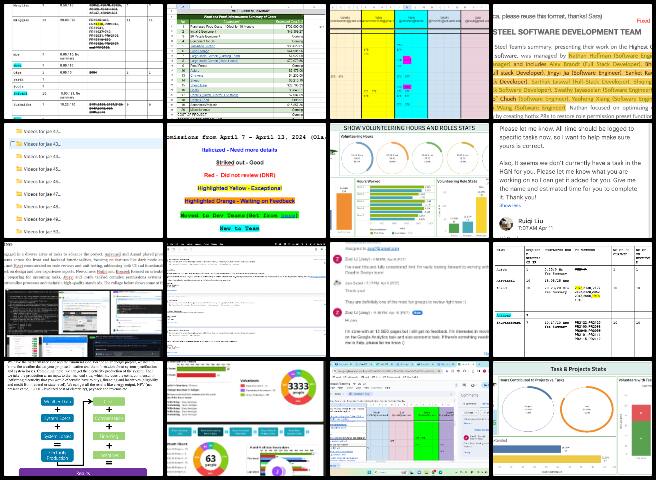

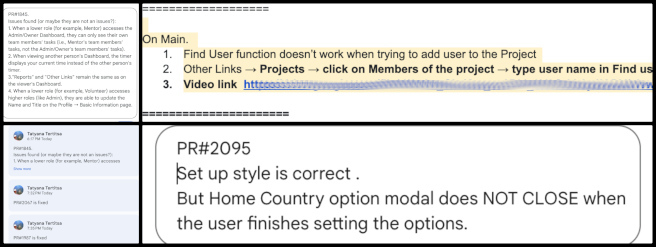
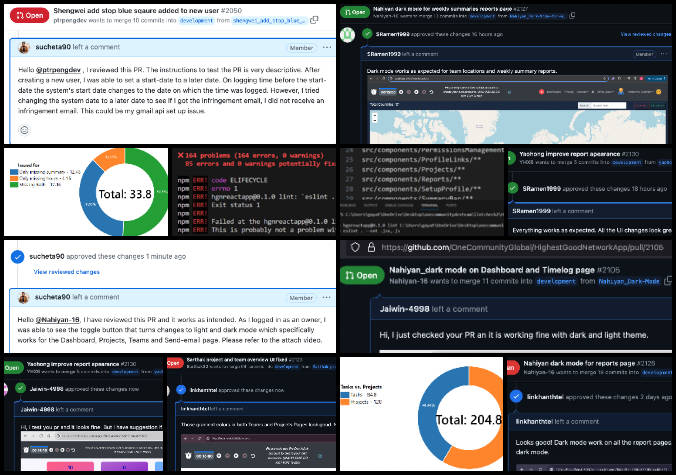
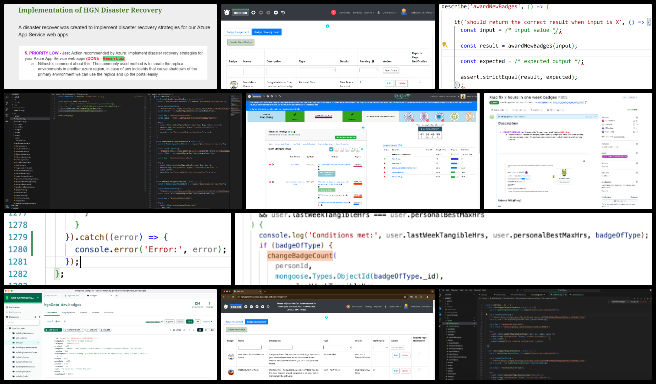
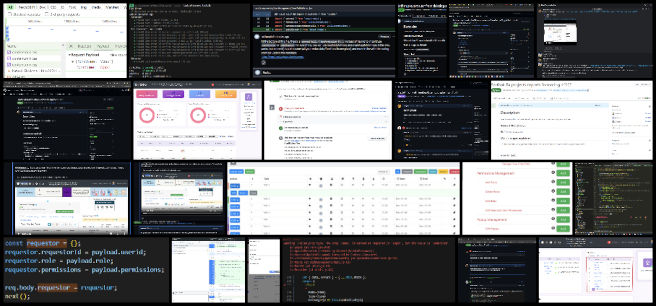
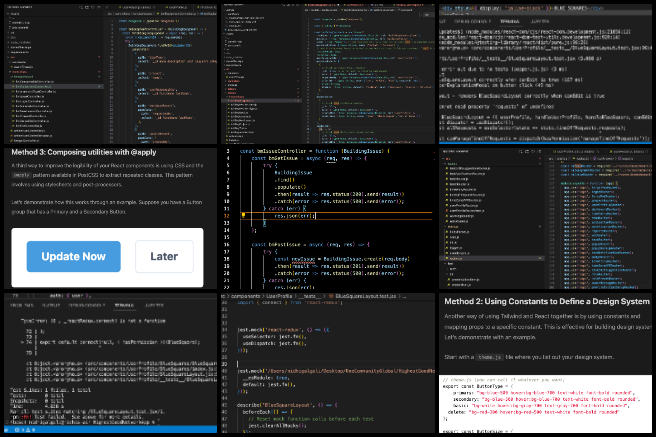










Connect with One Community